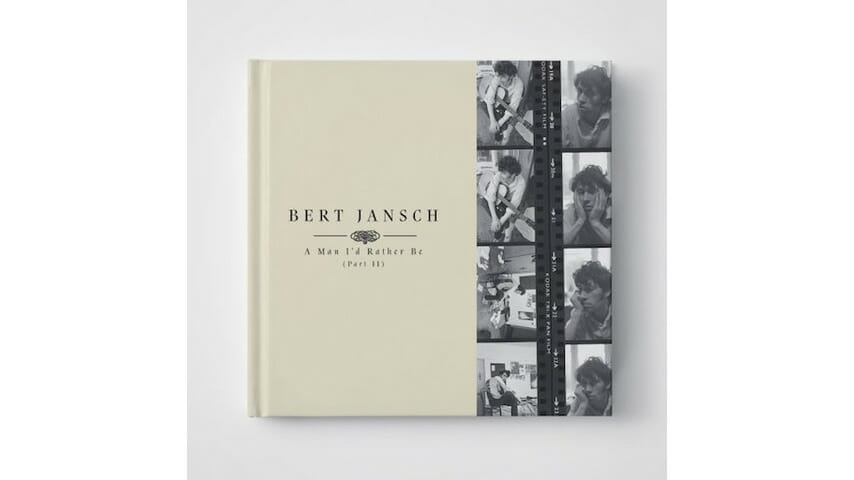
Nearly seven years after his death, Bert Jansch remains a seminal figure who championed traditional music spawned from its English origins. His work with the progressive folk ensemble Pentangle and alongside fellow guitarist John Renbourn established his career in the ‘60s and ‘70s, but his solo albums, beginning with eponymous debut in 1965, found him embracing a sound that mostly eschewed any accoutrements and relied instead on austere vocals and alternate acoustic tunings. His was a style aimed at pleasing the folk purists for whom modern music was almost an anathema. A singular talent, Jansch cast a wide net and offered inspiration to scores of younger guitarists, particularly in the U.K. that soon followed in his wake.
While a cult following grew here in the States, most Americans came to know him as the support act for some of Neil Young’s solo tours. That said, Earth Recordings’ ongoing campaign to keep Jansch’s work in print, including the release of two collections of his solo albums under the name A Man I’d Rather Be, serves an important historical purpose. The first volume was released last month, and this week a second set will be available, which spotlights his middle period from 1967’s Nicola, its successors its successors Birthday Blues (1969) and Rosemary Lane (1971), and through to 1973‘s Moonshine, an album which found him flirting with the idea of recasting himself as a modern singer/songwriter with occasional instrumental backing. It’s the ideal showcase for Jansch’s melodic grace, easy amble and folk finesse, which preceded a move into slightly more mainstream terrain.
When the four albums that make up this set were originally released, the idea of making even a modest change in his m.o. was still years away. Nicola expands on his familiar style by offering occasional blues (“Weeping Willow Blues,” “Come Back Baby”), a mild flirtation with pop (“Wish My Baby Was Here,” “Life Depends on Love”) and even dabs with brass and rhythm (“A Little Sweet Sunshine”). Still, these songs are the exception rather than the rule. For its part, Birthday Blues wisely keeps Jansch’s guitar and vocals firmly in the forefront, even with some light accompaniment by Pentangle cohorts Terry Cox and Dave Mattacks. Nevertheless, it’s a mostly low cast affair, defined by its rather sobering subject matter: “Poison,” “I Am Lonely” and both “Blues” and “Birthday Blues,” among them.
Rosemary Lane found Jansch returning to the purity of his acoustic origins through a series of mellow musings, including “Reynardine,” a standard especially appreciated by folk aficionados. That emphasis on cultivating the classics evolved further with Moonshine, the fourth and final album of this set. Jansch’s takes on “The First Time Ever I Saw Your Face,” “Twa Corbies,” “Yarrow” and “The January Man” showed his willingness to embrace a somewhat wider audience, even though he had yet to claim a real commercial foothold.
Ultimately, A Man I’d Rather Be (Part II) is best suited to those who may be aware of Jansch’s formidable reputation, and ready to begin some intensive album acquisition. Given the evidence provided by what’s heard here, that effort is certainly well warranted.